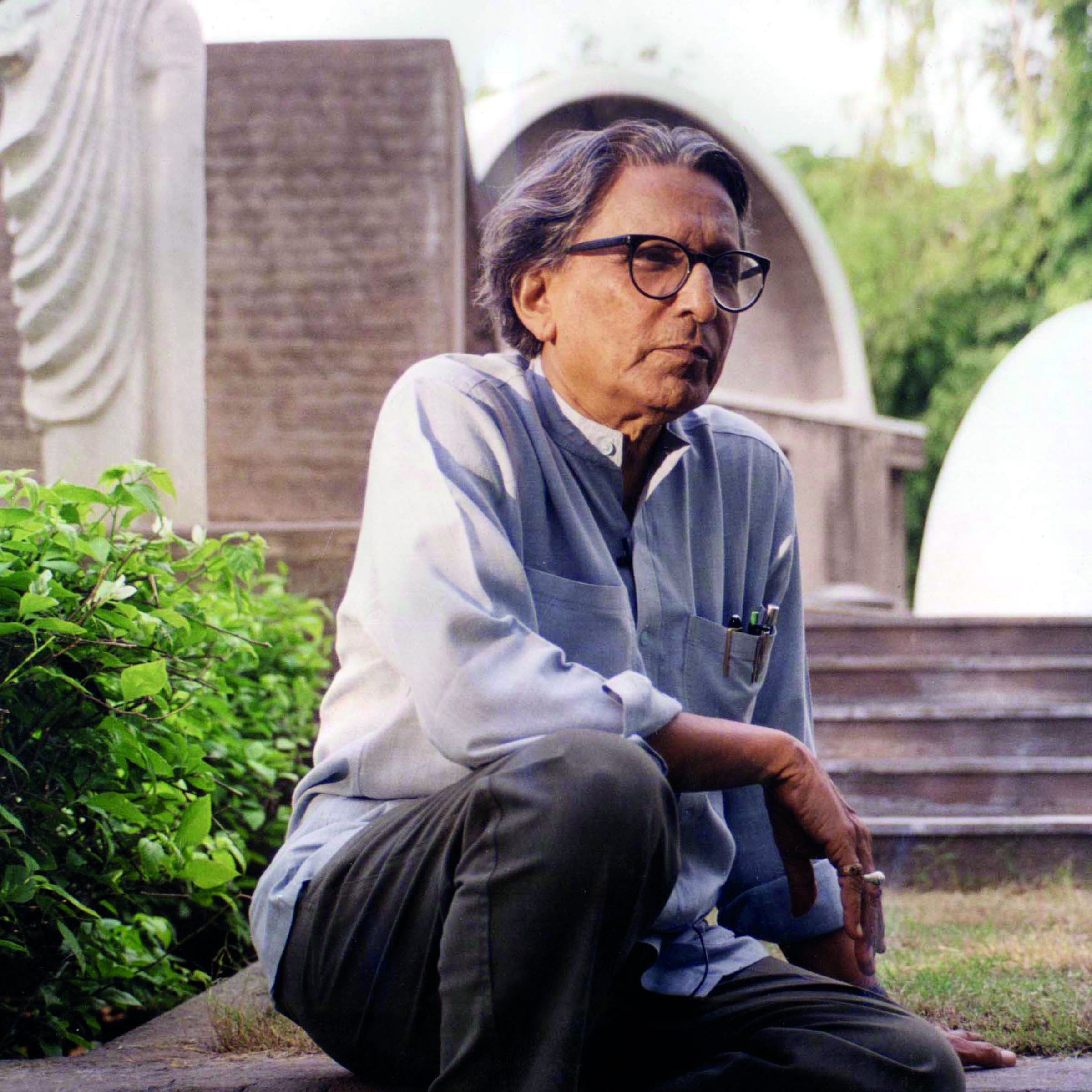
Doshi, a pioneer of social housing
The Indian architect was awarded the prestigious prize in 2018.
When he was awarded the Pritzker Architecture Prize in 2018, the architect Balkrishna Doshi was already 90 years old and had already spent almost 70 years into his career in design. A true 'monument' of Indian architecture, who had begun his long career working with two renowned masters of internation alarchitecture: Le Corbusier and Louis Kahn. In fact, the first statement Doshi made after being awarded the Priztker Prize paid tribute to Le Corbusier's impact on his work: "My works are an extension of my life, my philosophy and my dreams, which seek to create treasures of the architectural spirit (...). I owe this prestigious award to my guru, Le Corbusier".
HIS STUDIES AND FIRST PROJECTS IN INDIA
Doshi was born in 1927 in Pune, in the state of Maharashtra, in a family that had been making furniture for two generations. By his own admission this meant he grew up surrounded by craftsmen, always struggling with measurements, proportions and materials. At the same time, life in the big family home, which - as is customary in India – gradually expanded over time to make room for the homes of uncles and cousins and their families, was a source of inspiration for the future architect. It gave him a bright and ever changing perception of living space.
In 1947, the year India gained independence, he joined the Sir J.J. College of Architecture in what was then the city of Bombay, one of India's oldest and most prestigious schools of architecture. After graduating from university, he moved to London for a period and then worked in Le Corbusier's firm in Paris from 1951 to 1954. The influence of the latter's architectural philosophy and stylistic canons were fundamentalon Doshi's entire body of work, as he himself acknowledged: "His teachings led me to question my own identity, prompting me to discover a renewed contemporary expression of life, employed regionally but aimed at discovering a holistic sustainable habitat. It is an affirmation of my belief that life is celebrated when lifestyle and architecture come together."
In 1955, he returned to Indiato supervise the Swiss-French architect's projects for the cities of Ahmedabad (Gujarat) and Chandigarh. In Chandigarh, Doshi supervised building works in the capital of Punjab that the Indian Prime Minister Jawaharlal Nehru commissioned directly to Le Corbusier. In Ahmedabad, on the other hand, he worked on plans for the Mill Owner's Association Building and Shodan House. In 1956 he decided to open his own environmental design firm called Sanghat in the city of Ahmedabad. A few years later, in 1962, he began a ten-year working partnership with the American architect Louis Kahn to build the Indian Institute of Management in Ahmedabad, later followed by other projects.
SOCIAL HOUSING FOR INDIA
Thanks to his pioneering work focused on the construction of low-cost housing and his work on modern town-planning along the lines of Le Corbusier's teachings, Balkrishna Doshi began to make a name for himself outside India.
As the jury of the Pritzker Prize said in its announcement statement: 'Over the years, Balkrishna Doshihas always created an architecture that is serious, never flashy or a follower of trends. With a deep sense of responsibility and a desire to contribute to his country and its people through high quality, authentic architecture, he has created projects for public administrations and utilities, educational and cultural institutions, and residences for private clients, among others.” A vision of architecture focused on the wellbeing of the community and not just making money, as Doshi himself has emphasised several times.
Doshi's lengthy partnerships with Le Corbusier and Louis Khan certainly left their mark, particularly on his early works that were mainly eye-catching constructions with powerful lines made out of exposed concrete. Over time, his architecture began to focus more on gaining a greater understanding and appreciation of traditional Indian architecture.
Doshi built several social housing projects as early as 1950. A few years later he acknowledged that designing housing specifically for India's poor classes had become a personal as well as a professional goal for him: a mission that saw him leave his signature on projects developed around the social, economic and even environmental settings in which they would be built.
Examples include low-cost housing complexes as the Indian Farmers Fertilisers Cooperativein Kalol (Gujarat) and Aranya Community Housing in Indore (Madhya Pradesh). He never stopped creating eco sustainable buildings, such as Madhya Pradesh State Electricity Board in Jabalpur in 1979 and the Indian Institute of Management in Bangalore (Karnataka) in 1992.
Also worth mentioning is his Life Insurance Corporation Housing project in Ahmedabad: a housing complex that could be occupied by several generations of the same family, thanks to a sequence ofter races that could be converted into new housing units if needed.







